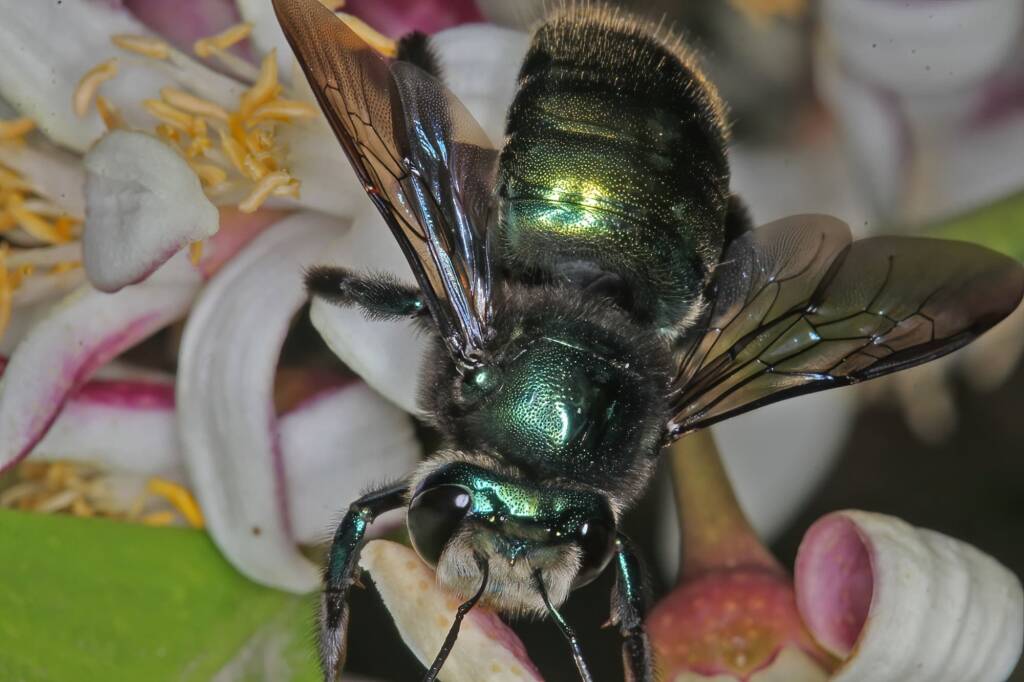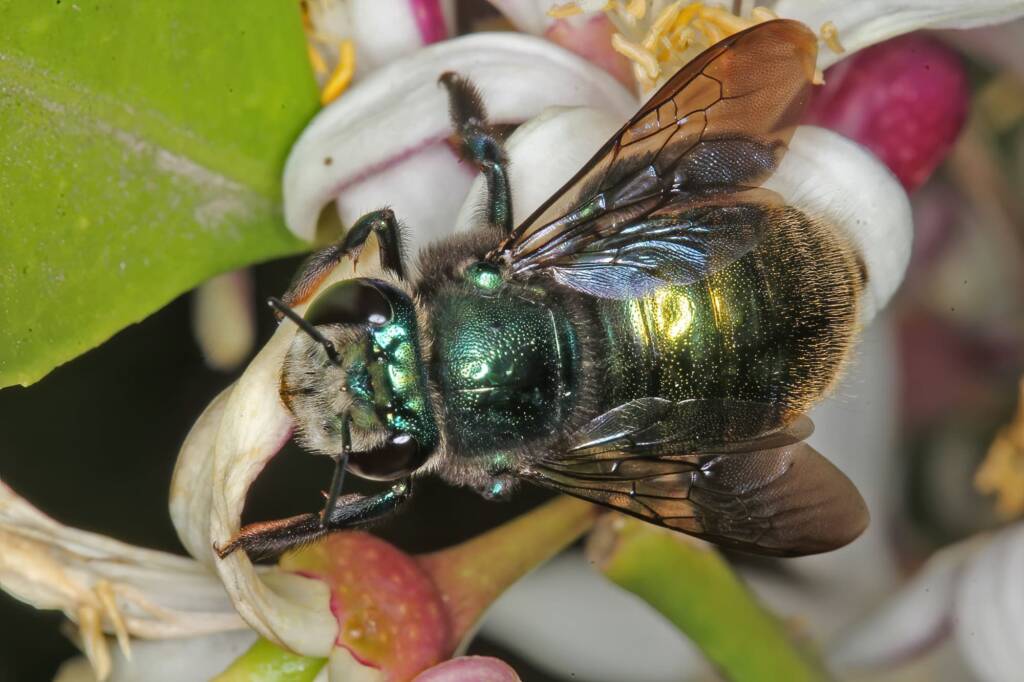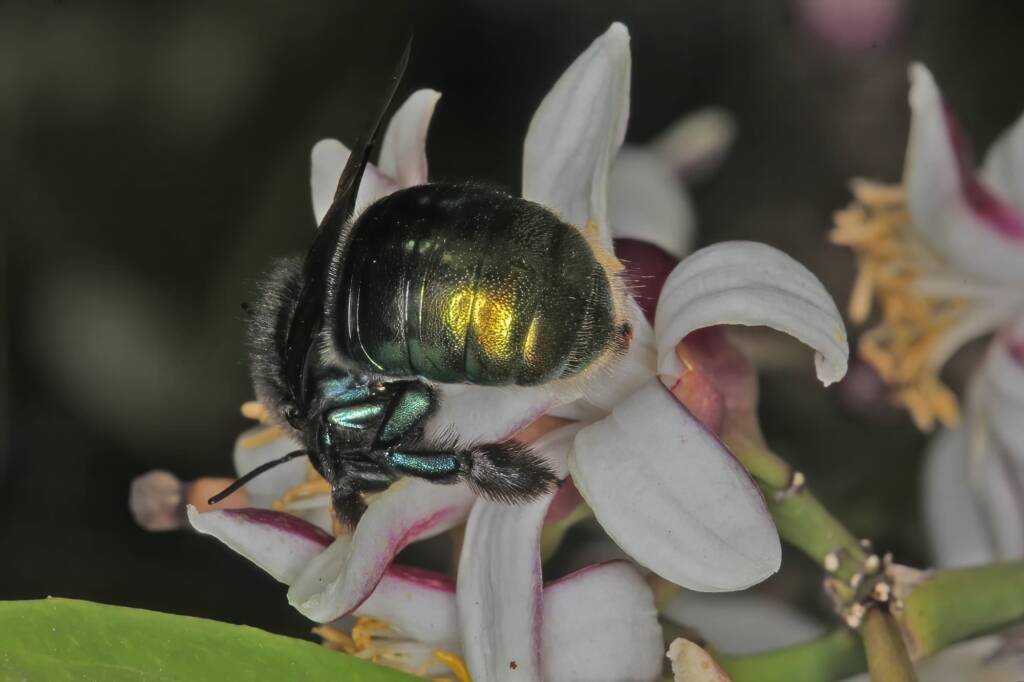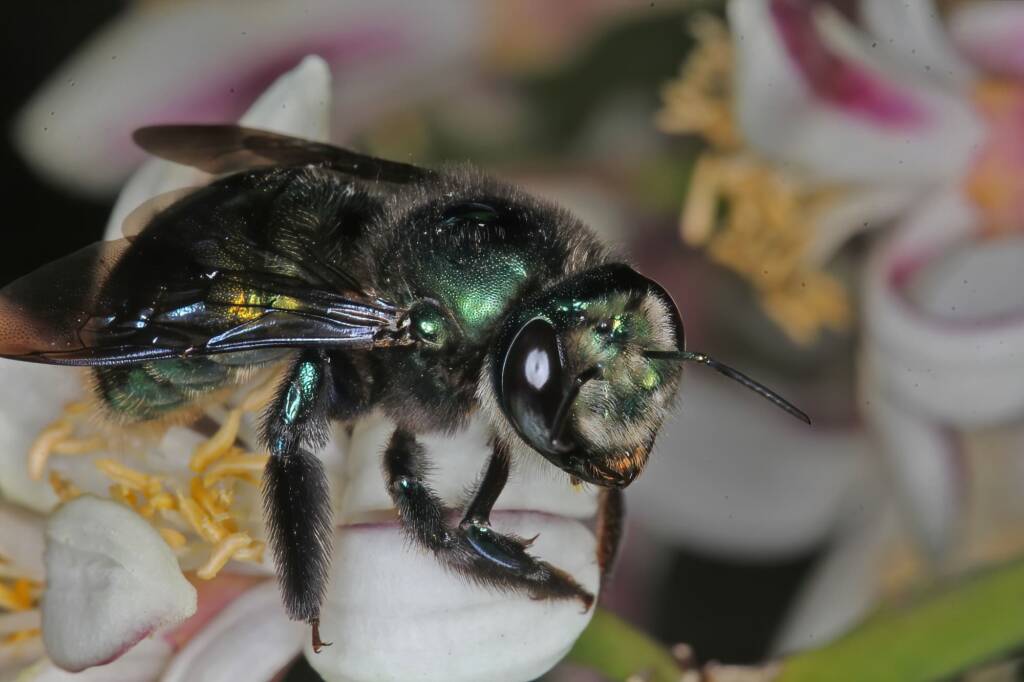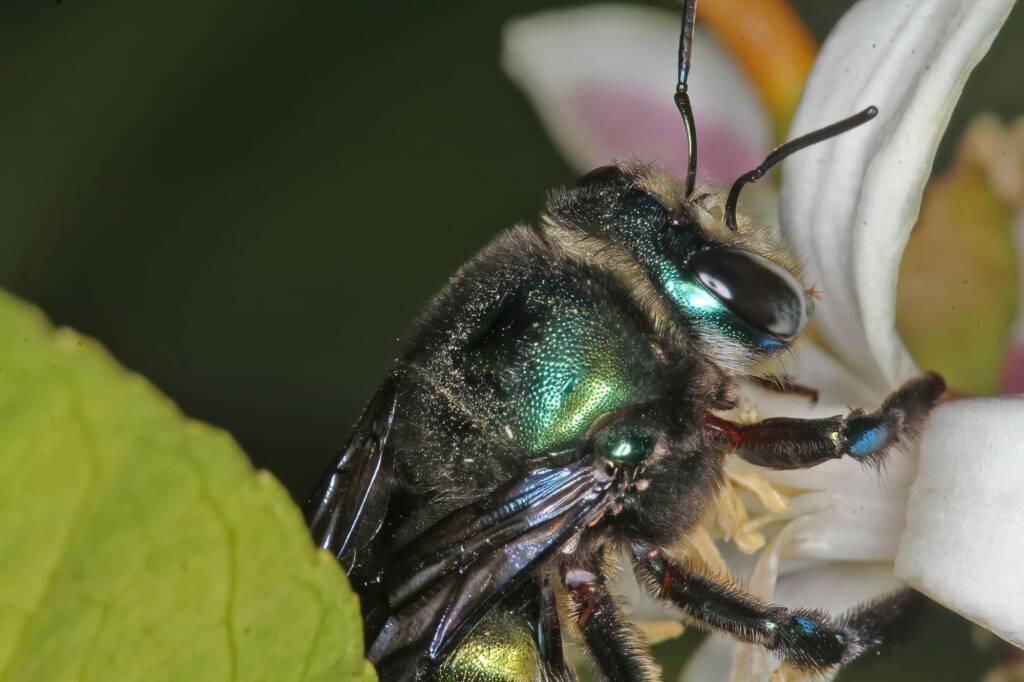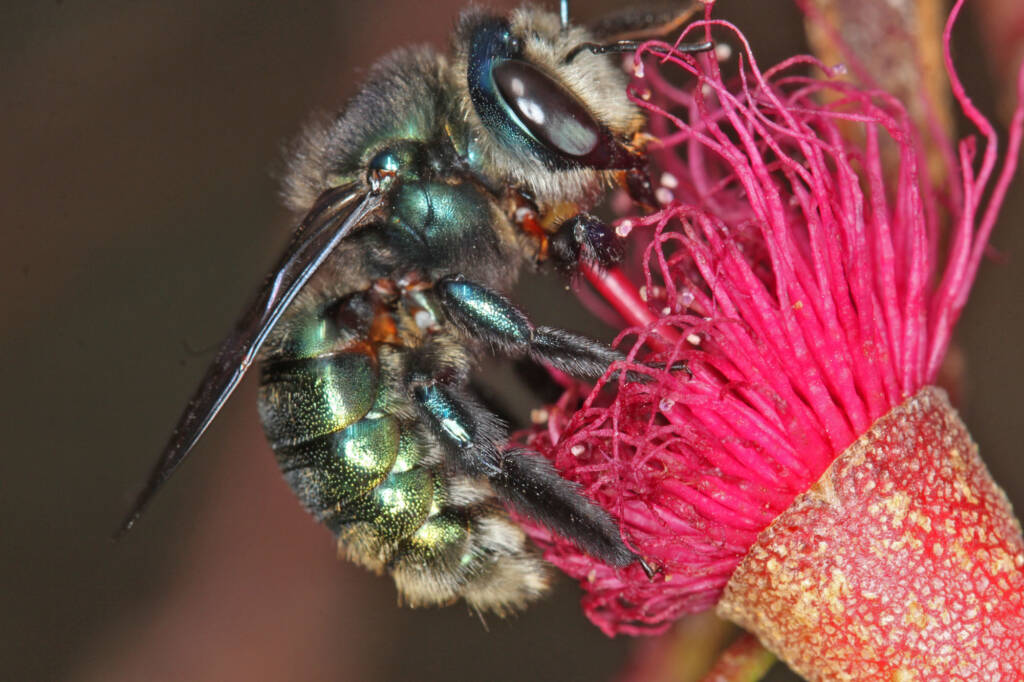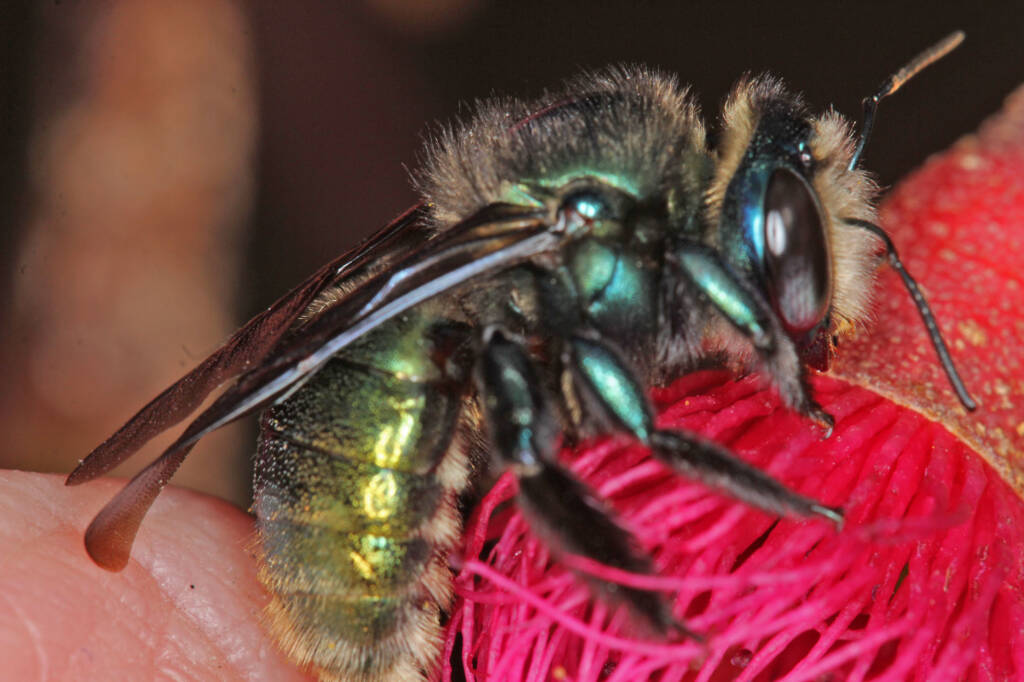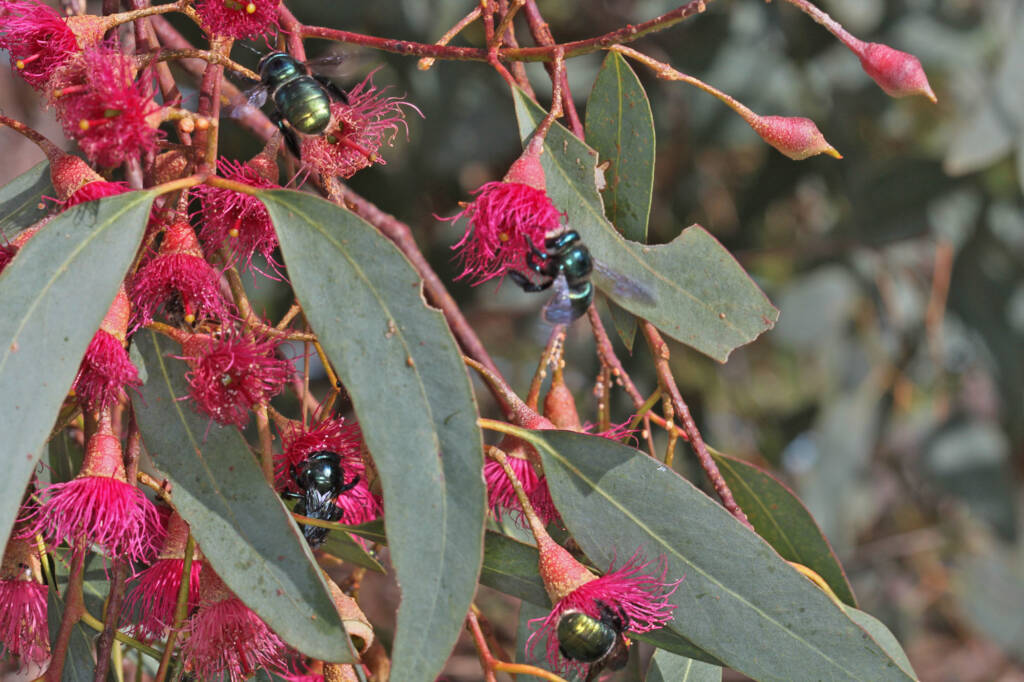Xylocopa aerataMale Xylocopa aerata Xylocopa aeratus Pollinator The Assassin
Photographs by Marc Newman ◦
Xylocopa (Lestis) aeratus, also commonly known as the Metallic Green Carpenter Bee and the Peacock Carpenter Bee, has a distribution along the east coast of Australia from eastern Queensland down to Kangaroo Island in South Australia.
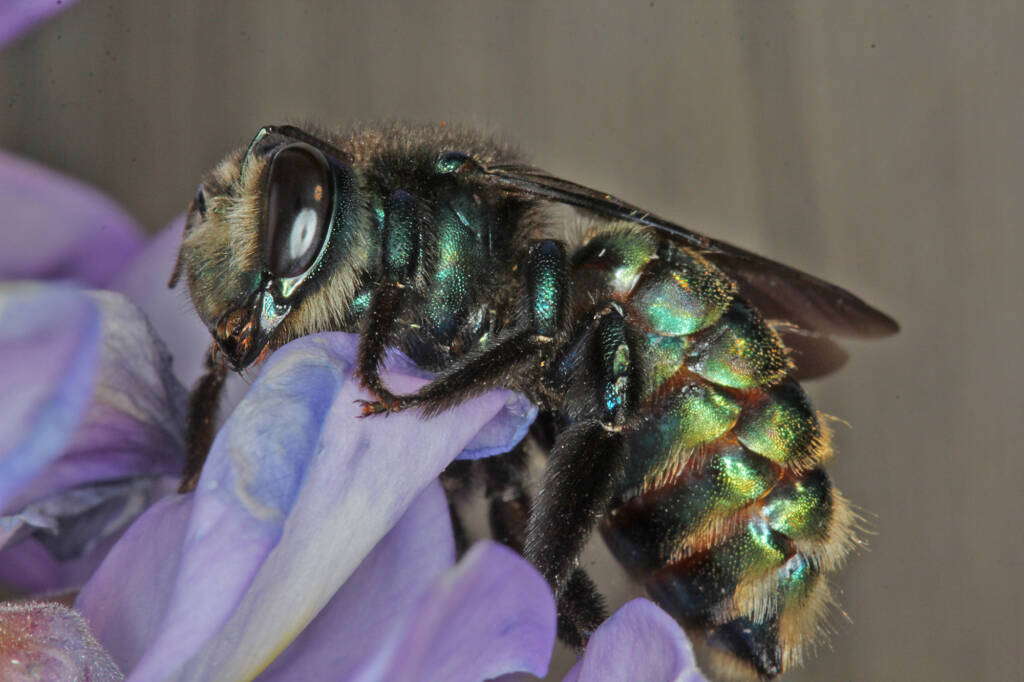
Common name
The internet has information also calling Xylocopa bombylans as both the being the Peacock Carpenter Bee and the Metallic Green Carpenter Bee. Xylocopa bombylans has a similar but wider distribution starting from South Australia up along the eastern coastline, up to Cape York, Top End and into Western Australia.
Atlas of Living Australia uses Metallic Green Carpenter Bee as the common name for Xylocopa (Lestis) aeratus, whilst iNaturalistAU presents them as Golden-green Carpenter Bee (Xylocopa aerata). Xylocopa aerata are also known as the Green Carpenter Bee.
The genus Xylocopa includes some 500 bees across 31 subgenera. They are commonly named “carpenter bees” which is derived from their nesting behaviour, where nearly all species burrow into hard plant material such as dead wood or bamboo. There are exceptions with species in the subgenus Proxylocopa, who dig nesting tunnels in suitable soil.
Described by F. Smith in 1851 as Lestis aeratus, the word aerata is Latin meaning “bronzed”. Xylocopa aeratus is known commonly as the golden-green carpenter bee because of its metallic green colour, although it may appear purplish or bluish from some angles.
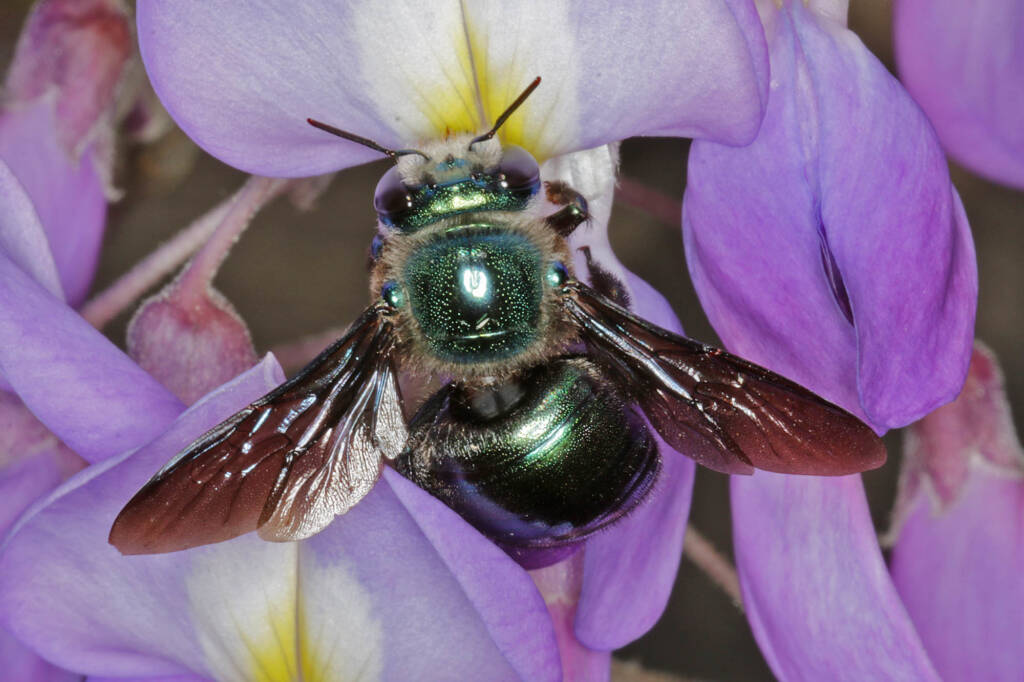
A fairly large and stocky bee (at nearly 2 cm), it is often heard by its loud low-pitched buzzing while flying between flowers. The male has yellow face markings. This bee does have a potentially painful sting, although no stings have been recorded.
Xylocopa (Lestis) aeratus on Nandina. The blurry head indicates that this species also performs the head banging buzz pollination as has been discovered for Blue Banded Bees.
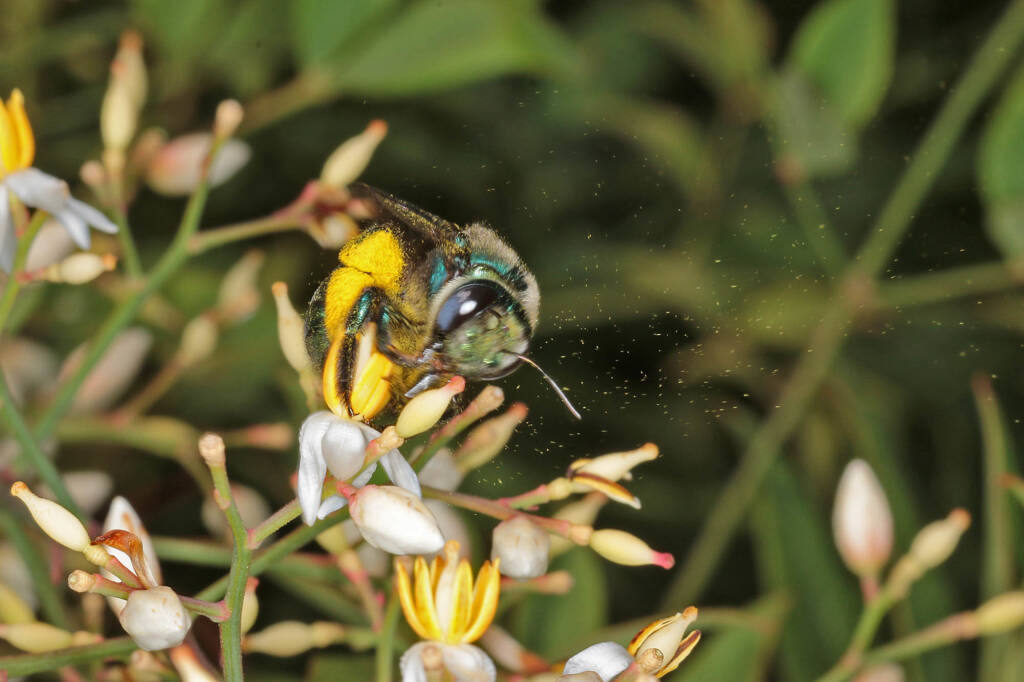
You can see my finger touching the wings and abdomen of the bee in this photo. These guys are very relaxed. Some of these girls are roosting overnight on the flower, so I suspect they are recently emerged and dont yet have a nest site.
Author Marc Newman
In the following photo, the Xylocopa (Lestis) aeratus female is on Lemon Verbena. She is accessing nectar by piercing the corolla.
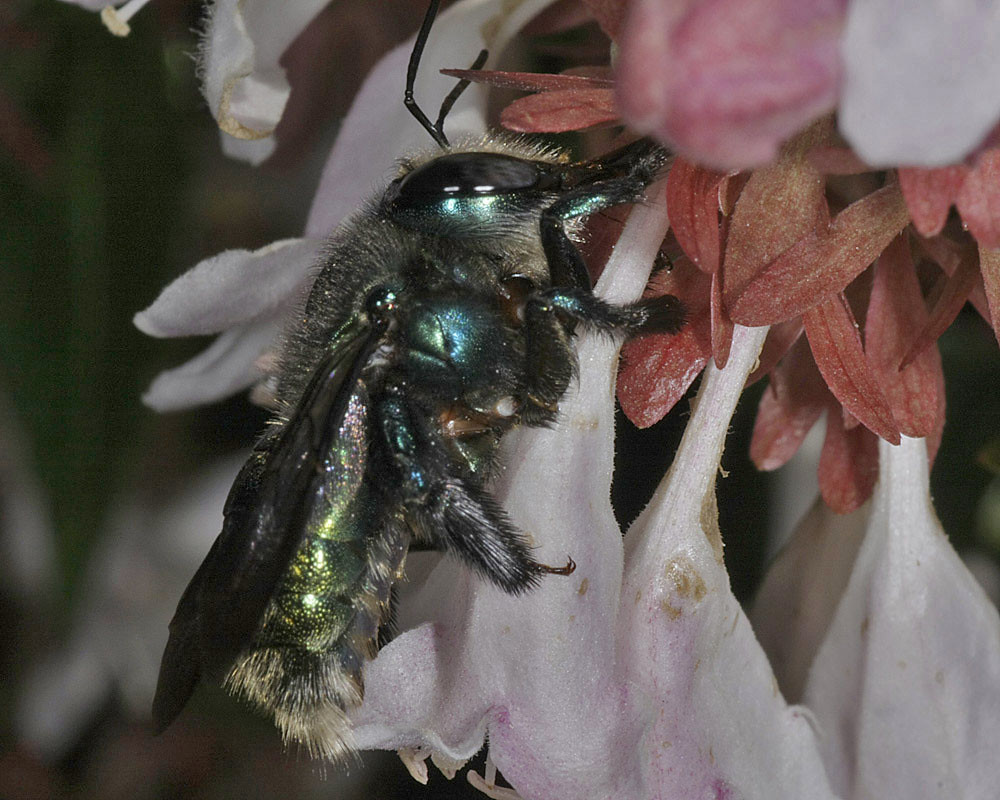
- Scientific classification
- Kingdom: Animalia
- Phylum: Arthropoda
- Class: Insecta
- Informal: Pterygotes
- Order: Hymenoptera
- Superfamily: Apoidea
- Informal: Apiformes
- Family: Apidae
- Subfamily: Xylocopinae
- Tribe: Xylocopini
- Genus: Xylocopa
- Subgenus: infrageneric Lestis
- Species: Xylocopa aerata
Footnote & References
- Photographs Xylocopa (Lestis) aeratus, Ballandean, QLD © Marc Newman, Flickr
- Xylocopa (Lestis) aeratus (Smith, 1851), Atlas of Living Australia, https://bie.ala.org.au/species/urn:lsid:biodiversity.org.au:afd.taxon:09992614-4f27-4e08-bb48-53bb1daf6e19
- Xylocopa aeratus, Golden-green Carpenter Bee, iNaturalistAU, https://inaturalist.ala.org.au/observations?taxon_id=522827
- Peacock Carpenter Bee, Xylocopa bombylans, Australian Museum, https://australian.museum/learn/animals/insects/peacock-carpenter-bee/
- Carpenter bee, https://en.wikipedia.org/wiki/Carpenter_bee (last visited May 8, 2022)
Xylocopa aerataMale Xylocopa aerata Xylocopa aeratus Pollinator The Assassin
XylocopaXylocopa aerata Xylocopa bombylans
BeesBees Anatomy Bee Behaviour Blogging Bees… Bees – image index Amegilla Bee Apis mellifera Austroplebeia australis Austrothurgus Braunsapis sp Ceylalictus perditellus Colletidae Euryglossinae Exoneura Homalictus Hyleoides bivulnerata Lasioglossum Lasioglossum (Chilalictus) Lipotriches Megachile Meroglossa Stenotritidae Tetragonula Thyreus Xylocopa

